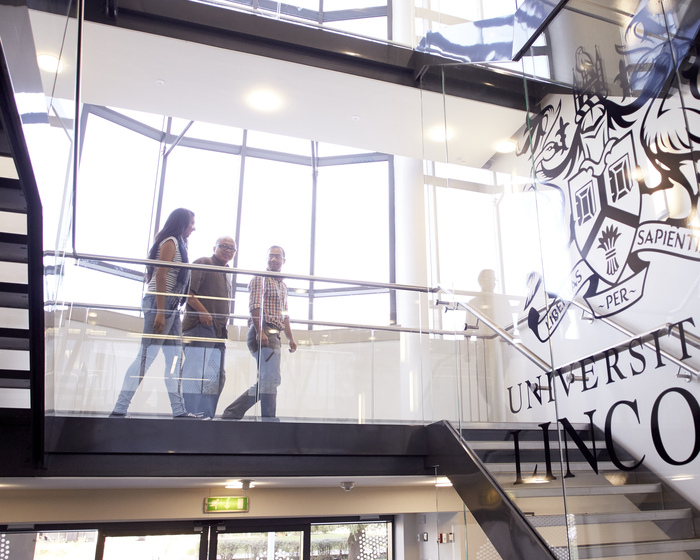/prod01/university-of-lincoln-cdn-pxl/media/responsive2017/images/course/coursebanner/UofL,Jan23,289,by,Electric,Egg,eggr3692.jpg )
Science Foundation Year
Computer Science Programmes
Study Computer Science
Through our inspirational teaching, world-leading research, and specialist facilities, we aim to prepare our graduates with the necessary skills and mindset to work at the frontier of our discipline. We aim to provide students with the opportunity to develop the experience, skills, and knowledge to design and develop a variety of software and hardware computing solutions for real-world problems. Particular attention is paid to cutting-edge topics, such as artificial intelligence and machine learning, in addition to core computer science disciplines.
Foundation Year Programmes (2024 Entry)
| Course Title | UCAS Code | Validation Status | Entry Requirements (A level) | Entry Requirements (BTEC) | Entry Requirements (T Level) | Additional Requirements (GCSE) |
|---|---|---|---|---|---|---|
| Computer Science with Science Foundation Year BSc/MComp | G408/G407 | Validated |
72 UCAS Tariff points to include 32 points from a STEM subject |
MMP (Merit, Merit, Pass to include 32 points from a STEM subject) | Pass (D or E on the Core) to include 32 points from a STEM subject | 3 GCSEs at grade 4(C) to include English and Maths |
| Computer Science with Artificial Intelligence with Science Foundation Year BSc | G413 | Validated | 72 UCAS Tariff points to include 32 points from a STEM subject | MMP (Merit, Merit, Pass to include 32 points from a STEM subject) | Pass (D or E on the Core) to include 32 points from a STEM subject | 3 GCSEs at grade 4(C) to include English and Maths |
| Games Computing with Science Foundation Year BSc/MComp | G409/G611 | Validated | 72 UCAS Tariff points to include 32 points from a STEM subject | MMP (Merit, Merit, Pass to include 32 points from a STEM subject) | Pass (D or E on the Core) to include 32 points from a STEM subject | 3 GCSEs at grade 4(C) to include English and Maths |
| Games Computing with Virtual and Augmented Reality with Science Foundation Year BSc | G410 | Validated | 72 UCAS Tariff points to include 32 points from a STEM subject | MMP (Merit, Merit, Pass to include 32 points from a STEM subject) | Pass (D or E on the Core) to include 32 points from a STEM subject | 3 GCSEs at grade 4(C) to include English and Maths |
| Robotics with Science Foundation Year BSc | H671 | Validated | 72 UCAS Tariff points to include 32 points from a STEM subject | MMP (Merit, Merit, Pass to include 32 points from a STEM subject) | Pass (D or E on the Core) to include 32 points from a STEM subject | 3 GCSEs at grade 4(C) to include English and Maths |
Please note that English language requirements for International students can be found on the full degree course pages for each programme.
Some programmes may also be available for part-time study.
How You Study
Students on all foundation programmes study a combination of core and subject-specific modules during the first year as part of an integrated degree programme. The combination of modules studied is tailored to the needs of the full degree programme that students wish to progress onto after successful completion of the foundation year.
Following successful completion of the Science Foundation Year, students will then progress onto the first undergraduate year of their chosen degree programme. This means students will study for a total of four years for a standard degree, or five years if they take an integrated Master’s degree. Students’ final awards upon graduating will reflect the full course title, for example “BSc (Hons) Computer Science with Science Foundation Year”. Course specific information on degree programmes within the School of Computer Science can be found on our course pages.
Modules
All students study modules which develop their knowledge and skills in computer science, mathematics, physics and study skills.
Following successful completion of the foundation year, students will then progress onto their chosen full degree programme.
How You Are Assessed
The way students will be assessed will vary for each module. It could include coursework, such as a lab report or essay, an end of year synoptic assessment, portfolio development, group work, or presentations to name some examples.


